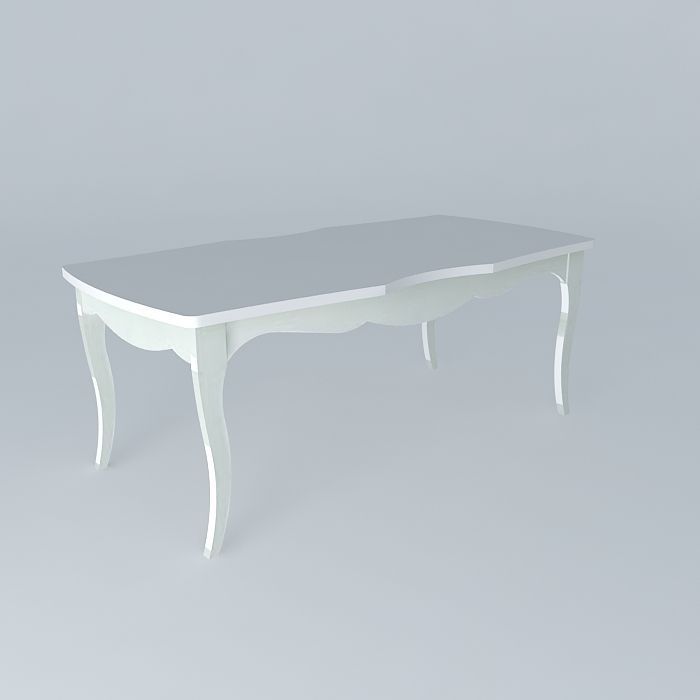
Coffee table SRAPHINE houses the world 3D model
cgtrader
This 3D model was originally designed using Sketchup 13 before being converted to all other major 3D formats. Its native format is .skp, with 3ds Max scenes being rendered in version 2016 using Vray 3.00, referencing dimension data as H: 45 cm x L: 110 cm x PR: 55 cm. The model weighs 11 kg and carries a classic and elegant design that injects a romantic vibe into your living room. Whether used for tea time or everyday relaxation, this wooden coffee table complements shabby chic decor beautifully, boasting perfectly curved and decorative legs. Decorating it with a tray featuring a stunning bouquet of flowers is recommended to take the ambiance to the next level. If you prefer an alternative design, consider the Pauillac Coffee Table for your home. For reference purposes, see 146943. With its affordable price tag of â¬99.99, this item is a worthwhile addition to any interior decor. To access and use these textures in various formats, including Sketchup, 3ds Max, C4D, Rhinoceros 3D, and more, follow these easy steps below: For Sketchup Users: Export your chosen image by going to File/Export/2d Graphic under the drop-down option. An alternative method involves going to File -> Export -> 3D Model. When exporting a COLLADA File (.dae), click on Options, ensuring Export Texture Maps is checked. After exportation, navigate to the exported file's location and find the folder containing all the textures. C4D Users: Importing a .skp file into C4D automatically creates a folder with associated textures right next to your imported file. 3ds Max Users: Upon importing the .skp file, texture files will be stored within the ..\3dsMax\scene\assets\images directory for you to easily find and use. To export in FBX format in 3ds Max: simply click on the export dialog window's "Embed media" option while choosing your output path; textures will then be generated automatically with your fbx file. Rhino 3D Users: After importing a .skp file into Rhinoceros 3D, head to the Panels section and access the Material editor. Here, choose any material that contains a texture on it. Simply clicking on the Texture name (under the Textures Section) then hitting three dots allows you view all embedded textures, which are found within ..AppDataLocalTemp\embedded_files. Don't hesitate to copy paste your required texture files into whatever folder suits your design requirements most efficiently.
With this file you will be able to print Coffee table SRAPHINE houses the world 3D model with your 3D printer. Click on the button and save the file on your computer to work, edit or customize your design. You can also find more 3D designs for printers on Coffee table SRAPHINE houses the world 3D model.
